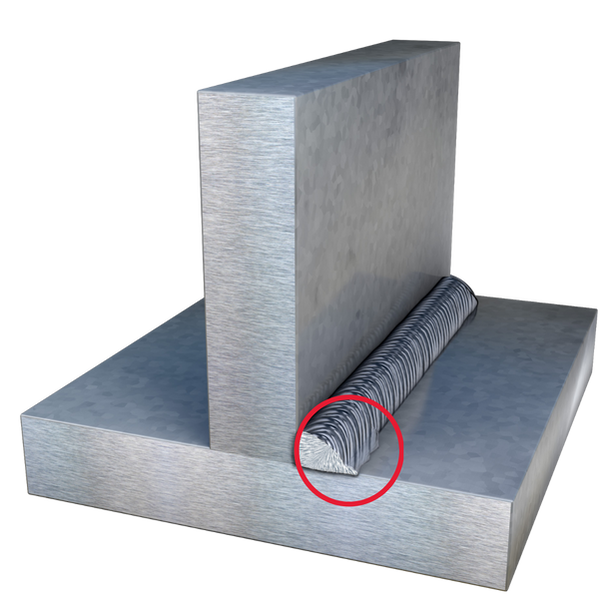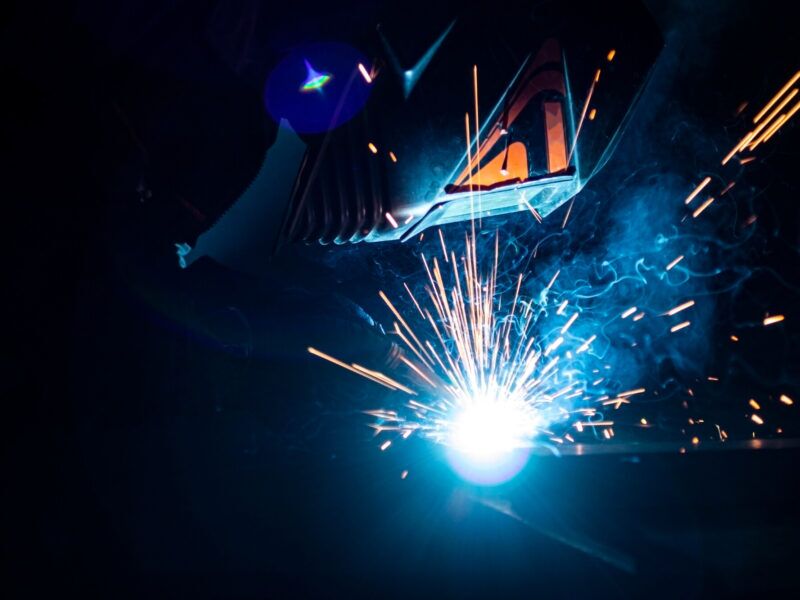Vital Tips for Welders: Protecting Against Undercut Welding and Ensuring Stronger Weld Joints
In the realm of welding, accomplishing durable and solid weld joints is the cornerstone of generating high-quality job. One typical difficulty that welders frequently encounter is undercut welding, which can endanger the integrity of the weld joint.

Understanding Undercut Welding
Undercut welding is a typical welding issue that occurs when the weld steel fails to effectively load the groove and causes a groove-like depression along the weld grain. This problem weakens the weld joint, making it prone to breaking and failure under tension. Undercutting can be brought on by various factors, including too much welding existing, high welding speed, improper electrode angle, inaccurate electrode size, and bad welding technique.
Among the major reasons for undercut welding is a discrepancy between the welding existing and the welding rate. If the welding current is expensive or the welding rate is too quickly, the weld metal may not properly fill the groove, causing damaging. In addition, utilizing an electrode that is also huge can result in a comparable end result, as the excess steel can not correctly stream right into the groove.
To avoid undercut welding, welders should guarantee they are using the proper welding criteria, maintain a suitable electrode angle, choose the suitable electrode size, and practice proper welding methods. By attending to these variables, welders can decrease the threat of damaging and develop more powerful, a lot more reliable weld joints.
Correct Welding Method
Reliable welding technique plays a critical duty in guaranteeing the quality and honesty of weld joints. One basic facet of correct welding method is preserving the proper angle and range in between the welding weapon and the work surface.
Furthermore, a consistent and consistent hand movement is crucial for creating solid and long lasting weld joints. Welders need to go for smooth, uniform motions to ensure even circulation of the weld product. Proper adjustment of the welding gun and filler material is also vital to accomplishing optimal penetration and fusion.
Furthermore, controlling the heat input and picking the ideal welding criteria based upon the material being welded are critical aspects in accomplishing top quality welds - Preventing weld undercut. Welders should comply with the advised settings given by welding procedure specs and change them as needed based on the certain requirements of the task. By grasping proper welding strategies, welders can considerably improve the stamina and reliability of their weld joints
Selecting the Right Electrode
Keeping the correct angle and range between the welding gun and the work surface is basic when taking into consideration the significance of picking the best electrode in welding applications. The selection of electrode plays a vital role in establishing the high quality and stamina of the weld joint. Electrodes are available in different kinds, each created for details purposes and materials.
To start with, choosing the appropriate electrode size is necessary. Thinner electrodes are appropriate for welding slim products, while thicker electrodes are much better for thicker materials and greater warmth applications. Matching the electrode size to the density of the workpiece assists accomplish a well balanced weld.
Secondly, comprehending the product composition of the electrode is vital. Various electrodes are developed for welding details materials like steel, stainless-steel, light weight aluminum, or cast iron. Making use of the right electrode product makes certain great combination and minimizes the threat of defects in the weld.
Lastly, considering the welding setting and method is essential when selecting the electrode type. For circumstances, particular electrodes are much better suited for overhanging or vertical welding placements, while others work well for flat or horizontal settings. Picking important source the ideal electrode based on the welding method boosts the overall weld quality and integrity.
Preparing the Base Steel
To ensure an effective welding process, what first actions should be taken when preparing the base metal for welding? Furthermore, any kind of existing weld product or deposit from previous welding need to be gotten rid of to ensure a clean surface for the new weld.

Performing Post-Weld Evaluations

After conducting these evaluations, welders should compare the outcomes against industry standards and project demands to ensure that the weld joint fulfills all needed criteria. Any type of inadequacies or discrepancies found during the post-weld inspection must be immediately dealt with via proper restorative measures to ensure the weld's stability. By vigilantly executing post-weld evaluations and without delay addressing any problems, welders can promote the quality and dependability of their work, eventually adding to the safety and durability of the bonded structures.
Verdict

Finally, avoiding undercut welding and making sure stronger weld joints need a mix of correct welding method, choosing the best electrode, preparing the base steel correctly, and conducting post-weld evaluations. By recognizing the sources of undercut welding and executing the necessary safety measures, welders can generate top notch weld joints that meet market standards and make certain the architectural stability of the bonded components.
Undercut welding is a typical welding problem that takes place when the weld metal fails to effectively fill the groove and results in a groove-like anxiety along YOURURL.com the weld grain (Preventing weld undercut). Undercutting can be triggered by various elements, consisting of too much welding existing, high welding speed, inappropriate electrode angle, incorrect electrode dimension, and bad welding technique
One of the major reasons for undercut welding is an imbalance in between the welding present and the welding speed. If the welding current is as well high or the welding speed is as well quickly, the weld steel may not effectively fill the groove, leading to damaging.Maintaining the appropriate angle and range between the welding weapon and the work surface is essential when thinking about the significance of choosing the right electrode in welding applications.